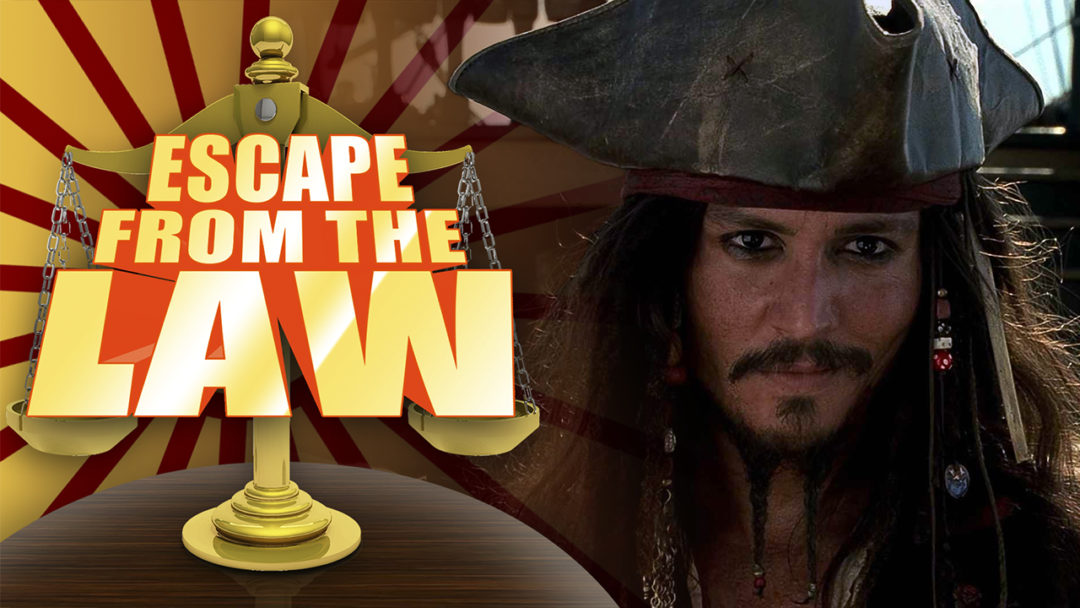The first time I heard about it, I didn’t think it was possible. “You’re telling me you’re going to have access to every Disney movie? I call BS.” But I was wrong. And it wasn’t just Disney movies — there were also The Disney Afternoon TV shows, various Disney Channel specials, and a bunch of other programs I’d never even heard of. Only this wasn’t Disney+.
This conversation took place seven years ago — back when Netflix Instant was getting started. I was in college at the time, and my dorm’s resident pirate had used BitTorrent to illegally obtain something like 300 GB of Disney content. At the time, it was hard for me to understand how that much piracy was even possible. My computer’s hard drive didn’t even have that much disk space, and the thought of consuming even a small fraction of that content made me feel like the Champion of All Couch Potatoes.
Fast forward to the present. We are now just a few days away from the launch of Disney+, and today’s technology makes the world of 2012 look like a Conestoga wagon at the start of the Oregon Trail. In the past few years, Netflix has grown from 27 million subscribers to 140 million subscribers, streaming quality has increased to support astounding 4K or even 8K resolutions, and there are now numerous other streaming services competing with Netflix.

The launch of Disney+ will have a huge impact on the streaming services market. But it will also impact internet piracy. The rise of Netflix and increased demand for video content correlated with a substantial downswing in video piracy. This makes sense. Internet piracy is driven by four primary factors — price, convenience, availability, and conscience. Generally speaking, content that is expensive, hard to access, and hard to use is more likely to be pirated than content that is cheap, easily accessible, and easy to use.
This explains why Game of Thrones is the most pirated show ever. The show is only available to consumers who either subscribe to HBO as part of an expensive cable TV package, which might not even include on-demand viewing and which almost certainly requires consumers to pay for tons of content they don’t want, or to people who pay $15 a month for HBO Now, who might only be interested in that one show.
Neither option is particularly attractive, which explains why season 7 has been pirated over a billion times and why the season 8 premiere was downloaded nearly 55 million times within 24 hours of its initial broadcast. On the flip side, those same piracy factors explain why Steam appears to have reduced video game piracy. The service sells games cheap, has convenient features like cloud saving and unlimited downloads, and a low barrier to entry.

It’s easy to understand why the rise of Netflix is associated with a decrease in video piracy. Netflix is cheap, more convenient than traditional piracy, and it contains a handful of features that simply can’t be found on The Pirate Bay like bookmarking your place in an episode or series, a powerful recommendation engine, and list features.
Disney+ places us at the precipice of a piracy proliferation. It is among the first services in a new wave of streaming competitors and a harbinger of dark times ahead. The problem is not Disney+ itself but the new wave of Netflix competitors that Disney+ brings with it including Apple TV+, HBO Max, NBC’s Peacock, Discovery/BBC, and Quibi. That’s on top of the already existing services like Hulu, CBS All Access, and Prime Video. Whereas Netflix used to be a cheap one-stop shop for content, the world of Disney+ is one where subscribers have to pay close to $100 a month to access all the content they’re interested in. They’ll also have to install countless apps on each of their devices and switch from app to app to find what they want.
Compare that to the world of piracy, which is free, quick, and easy, and has seen its fair share of innovation over the years. The most notable piracy advancement is the development of Kodi, which provides users with quick and ready streaming access to virtually any content they might want. To make matters even worse for the streaming services, it is not even illegal to stream a copyrighted work.
The Copyright Act makes it illegal to distribute a copyrighted work, but it is not illegal to view someone else’s illegal distribution. For example, if a bar owner broadcasts a Pay-Per-View fight without permission, the fight organizer can sue the bar owner. But the owner cannot sue the bar patrons for watching the fight. The same thing is true for streaming. It is illegal to distribute a stream of copyrighted materials, but it is not illegal to access a stream. That means one of the most powerful piracy deterrents no longer exists.

Ultimately, the prevalence of piracy functions as a barometer of consumer satisfaction. The past few years have confirmed that piracy increases when consumers are frustrated with the price or convenience of a product or service. If piracy does pick up, I suspect that the major industry players will attempt to modify the Copyright Act to crack down on it, probably by outlawing the unauthorized streaming of copyrighted works and/or by requiring internet service providers to help content providers identify pirates. We can already see this approach in action. A few senators recently introduced a bill that would increase the penalties for making a work available for streaming. While these attempts will certainly discourage pirating, they won’t address the underlying consumer frustration.
In the ideal scenario, the fragmented streaming marketplace and resultant consumer frustration would cause consumers to reject the multi-service model. This, in turn, would lead to consolidation where there are just a few services, but each would have a wealth of content offered at a reasonable price. Of course, it’s also possible that enough consumers buy into each of the streaming platforms that they remain profitable despite the inevitable increase in piracy. This would lead to even more services, and it would create an outcome that is similar to cable TV packages, with high costs and a relatively low density of desirable content.
Disney+ officially launches on Nov. 12, but I can’t help but think of the service as a natural extension to the 300 GB data dump from 2012. The key difference is that in 2012, only a small fraction of Disney’s library was available for legal purchase, and even that was prohibitively expensive. That changes with the launch of Disney+.
As consumers, the power rests in our hands. We get to decide which services are worthy of our money and deserve to succeed. Disney+ offers tremendous value and is exactly the kind of offering that can displace pirates. But with a horde of competitors in its wake, it remains to be seen whether Disney+ will lead to A Whole New (Pirate-Free) World or if it is just the first step on the road to Yo-Ho, Yo-Ho, A Pirate’s Life for Us.






Published: Nov 10, 2019 03:00 pm